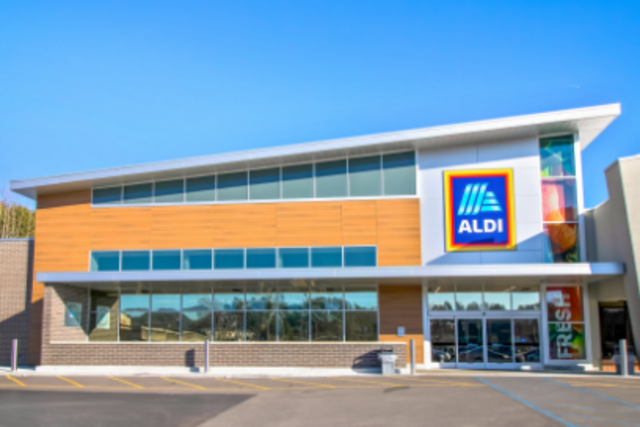YieldTalk news and links - 14 February 2022
This week: An anatomy of Bitcoin price manipulation; Schrodinger's Balance Sheet 🤔; An "ultra short-term note" from YieldStreet

Notable offerings
FranShares (read our review) announced they will formally launch in March offering low-cost fractional investments in US-based business franchises, providing passive income and appreciation potential open to any investor, with a $500 minimum. Sign up for the waitlist at FranShares. 👈
***
YieldStreet (read our review) has launched Ultra Short Term Note XLV, offering a 3% annualized return for a 3-month investment. According to YieldStreet, “Invest in a short-term product that aims to accommodate investor liquidity needs while also helping to support the growth of future investment opportunities on the Yieldstreet platform.” Notably the minimum on this offering is just $500. Find out more at YieldStreet. 👈
***
🎉 As a reminder, Hedonova is still offering YieldTalk readers a $50 sign-up bonus for new investments in their alternatives hedge fund, which is effectively an immediate 5% return on a $1,000 investment 📈. Click here to claim your $50 bonus 👈
Worth Reading this Week
A roundup of insights and interesting links from around the investment crowdfunding ecosystem.
Most major media outlets focus on headline numbers when it comes to economic indicators, but it’s also helpful to dig a bit deeper, as those headline numbers rarely tell the full story on topics like inflation:
Prior to the pandemic, the balance of Goods (38.7%) and Services (61.3%) was clearly tilted towards Services. That was shifted as so many had to scramble to work from home. Global production of goods is now up 5% over 2019 pre-pandemic levels, but demand has risen 20%. And while we have more ships on seas, and more containers, and ports working 24/7, it still is insufficient to meet the demand for Goods. That initially sent CPI Goods up over 8%, while CPI Services is about where it was in 2019 ~3%. As measured by CPI, Services are now 4.6% higher than a year ago but Commodities are up a whopping 12.4%.
***
Most investments are some form of bet that the future will be better than the past. And when things feel as 😬😬😬 as they have lately, it can be hard to be optimistic – often triggering both pessimism and a longing for “the good old days”. This piece is nice reminder that humans are by nature inclined to see the past through rose-colored glasses:
There is nothing wrong with feelings of nostalgia. In some ways, building a portfolio of nostalgic feelings in your memory bank is what life is all about. … But the good old days are probably not as grand as you think.
Crypto
It is not hard to find examples of scams and fraud in the cryptocurrency ecosystem. But it’s also not actually that hard to find examples of scams and fraud in pretty much any type of investment or market. Dror Poleg makes the case that the transparency inherent in a public, immutable record of every transaction is merely making more visible the kind of bad actions that happen elsewhere, we just can’t see it as easily:
It follows that crypto markets are not uniquely unfair or corrupt; they are unique for being visibly unfair and corrupt. They show us something about the world that is easier to ignore in other markets. Arguably, the comparison holds even with public markets: There, too, some entities trade on information that is not publicly available, front-run their own customer’s trade, and accumulate excessive returns.
***
As noted above, there’s an interesting case to make that crypto markets aren’t manipulated any more than other markets, it’s just easier to observe the manipulation. Although this fascinating deep dive into the anatomy of an episode of Bitcoin price manipulation does illustrate the benefits of market transparency in spotting said manipulation, it also shows that some aspects of crypto (24/7 trading, relatively low liquidity) almost certainly make this kind of manipulation easier than in other markets:
The best way to think of crypto markets is that each one is like a poker table. When a trader wins, it comes from someone else’s loss at the same table. The prices on all the tables are kept in line by arbitrage bots who simultaneously buy and sell on each market to keep prices in line.
Startups/Venture
Many early-stage startup investments take the form of “preferred equity”, which improves the odds that investors will get something back if things don’t quite go as planned. For example, if the startup fails to gain traction, and ends up acquired by a larger company at a price that’s lower than their last valuation, the holders of preferred equity skip to the front of the line ahead of founders and employees (who own “common stock”). While that’s nice from an investor perspective, there’s a (strong) case to make that it also contributes to “zombie startups” by sapping the motivation of “underwater” employees the same way that homeowners underwater on their mortgage are much more likely to simply walk away:
[W]hen a startup’s valuation falls too low, the value comes out of the common shareholders; they get squeezed first. This is most severe in a down round where anti-dilution provisions come into play. This is the Silicon Valley version of a good ol’ Wall Street bailout: the debt (preferred) holders get saved, and the equity holders get wrecked.
***
The folks at Microventures (our review) have published a helpful primer on understanding the key financial statements at startups, including the balance sheet and cash flow statement:
When looking to invest in a startup with limited years of operations, and therefore limited years of financial statements, projected financials can be a valuable resource to evaluate potential performance. However, it is important to recall that actual performance can vastly differ from projected performance, and therefore should be taken with a grain of salt. But while not exact nor guaranteed, properly evaluated projected financials can provide a valuable glimpse of the potential trajectory of the business.
Real Estate
As Americans keep rethinking their post-pandemic living arrangements, demand for apartments in suburban and smaller metro areas has been on quite a tear, driving up the value of multi-family investments:
According to real estate data firm Real Capital Analytics (RCA), the RCA Commercial Property Price Index (CPPI) for the apartment sector climbed 23.6 percent year-over-year in 2021—the highest increase on record and even stronger than pre-Global Financial Crisis when investors were purchasing apartment buildings to convert them into condos to take advantage of the overheated residential market.
***
Demand continues to far outpace supply in the residential housing market, which isn’t great news if you’re trying to buy a home (especially a first-time home), but does bode well for investors in single-family rentals (for example, with Roofstock) and fix-and-flip loans (for example, with Fund That Flip). More details from Business Insider:
In January, the median home-sale price spiked 16% year over year to an all-time high of $365,000, according to Redfin’s calculations. During the month, which was the most competitive in housing history, newly listed homes decreased by 9.1%. A new study by Realtor.com claims the gap between single-family home construction and household formations grew from 3.84 million homes at the beginning of 2019 to 5.8 million homes by the end of 2021, meaning homebuyers began the year with a tremendous lack of inventory.
***
Anecdotally, lots of companies are rethinking their office space needs in a post-Covid world, implying major shifts in that segment of the commercial real estate market. Analysis from Moody’s published by the Urban Land Institute suggests that there’s some nuance to those office-lease numbers:
Average U.S. office lease terms decreased significantly in 2020, from roughly five years to four years, as Exhibit 1 shows. However, that decline is significantly muted when excluding very short-term leases of one year or less. Excluding very short leases, terms only declined from about 65 to 63 months. While that decline is not insignificant, it is in-line with the decline seen between 2010-2013 and 2015-2017. Therefore, excluding very short leases (one year or less), the 2020-2021 lease term contraction is more a continuation of a decade-long trend, where lease terms have moved slowly from about 67 to 63 months. Also, this trend does appear unique to office sector, as lease terms have not clearly retracted in the retail or industrial sectors.
Odds and Ends
Email subscribers get this roundup before it's published here. Join the thousands of investors who get alternative-investor education, news and resources -- along with notable investment offerings -- delivered right to their inbox:
Share this post:


